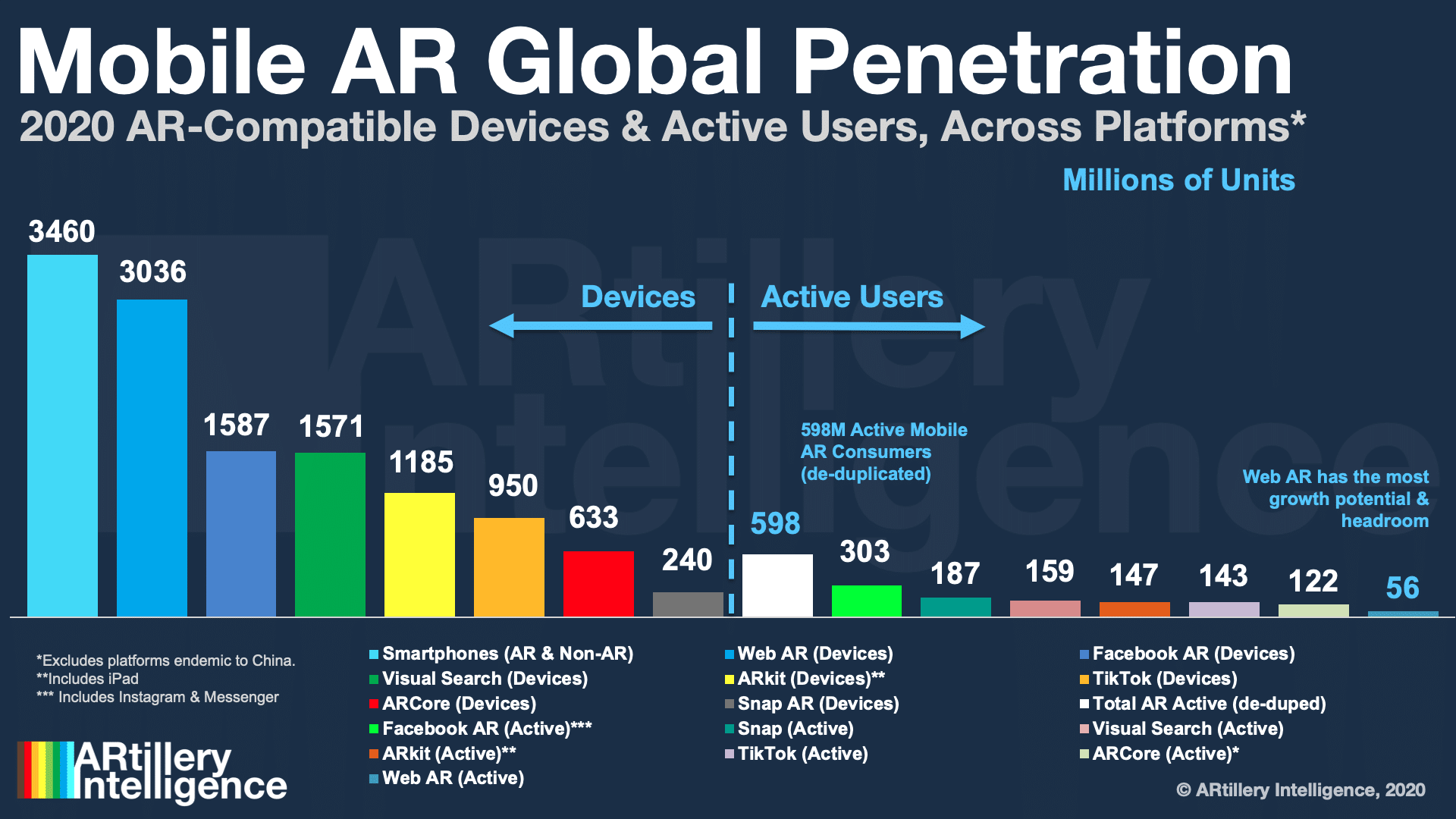
Social media has become a prevailing vessel for mobile AR. The technology is naturally additive to the already-popular ritual of sharing multimedia through social channels. That’s everything from augmented selfies to stories to (increasingly) TikTok creations.
“Already popular” is the key term, as AR piggybacks on an established activity, rather than forcing new behavior. This aligns with the training-wheels principle we’ve examined in the past. AR isn’t proven enough to get users to seek it out. It has to be laid in their paths.
And that’s precisely what the most successful forms of consumer-based mobile AR have done. The poster child here is Snapchat, integrating AR into already-popular camera-based media sharing, and making it dead simple. It has even avoided techy acronyms like “AR.”
To validate that, Snapchat recently passed one-trillion lifetime lens views from roughly one million lenses. The most popular lenses can be viewed as many as 3 billion times. Meanwhile, more than 180 million users view Snapchat lenses daily — the most of any consumer AR player.
80/20 Rule
To further validate some of the above, eMarketer reports that U.S. social networking users who engage with AR reached 43.7 million last year. And the firm projects that to grow to 46.9 million this year and 48.3 million by 2022. These figures measure U.S.-based monthly active users.
To put these totals into perspective, 43.7 million users at the end of 2020 represent 13.2 percent of the US population, 15.1 percent of internet users, and 20.8 percent of social network users. If true, that means one-fifth of U.S. social network users engage with AR at least monthly.
These figures directionally align with our research arm, ARtillery Intelligence. Specifically, the firm projects 598 million AR active users globally. That total goes beyond social users, including ARkit, ARCore, webAR, etc (see below). And it’s a global figure versus eMarketer’s U.S. focus.
Breaking down that 598 million users, Snapchat is in the lead for any single app with 187 million active AR users at the end of 2020. But Facebook collectively exceeds that total with 303 million users when adding up its properties — News Feed, Messenger, Portal and Instagram.

Direct Tie
Beyond user traction, AR fits naturally into Snapchat and other social players’ revenue models. Advertisers not only gravitate to all those engaged lens users, but the format itself elevates their ability to demonstrate products or brand narratives — and the numbers back that up.
Here, there’s a direct tie between users and monetization. Robust lens libraries attract users and boost engagement. A growing audience then attracts lens developers which further expand the library and, in turn, more users. And all of the above attracts the real endgame: advertisers.
Snap knows that this virtuous cycle kicks off with developers, hence its ongoing support and community building. One reason Snap has been able to reach a trillion lens views is its embrace of the lens creator community — a key theme at its recent developer event.
Snap has come a long way from initially keeping AR lens design in-house (where TikTok is today). Lens Studio is its way to scale up volume and creativity. And it’s working so far considering engagement and revenue. Now it just needs to watch out for Facebook (read: Instagram).

